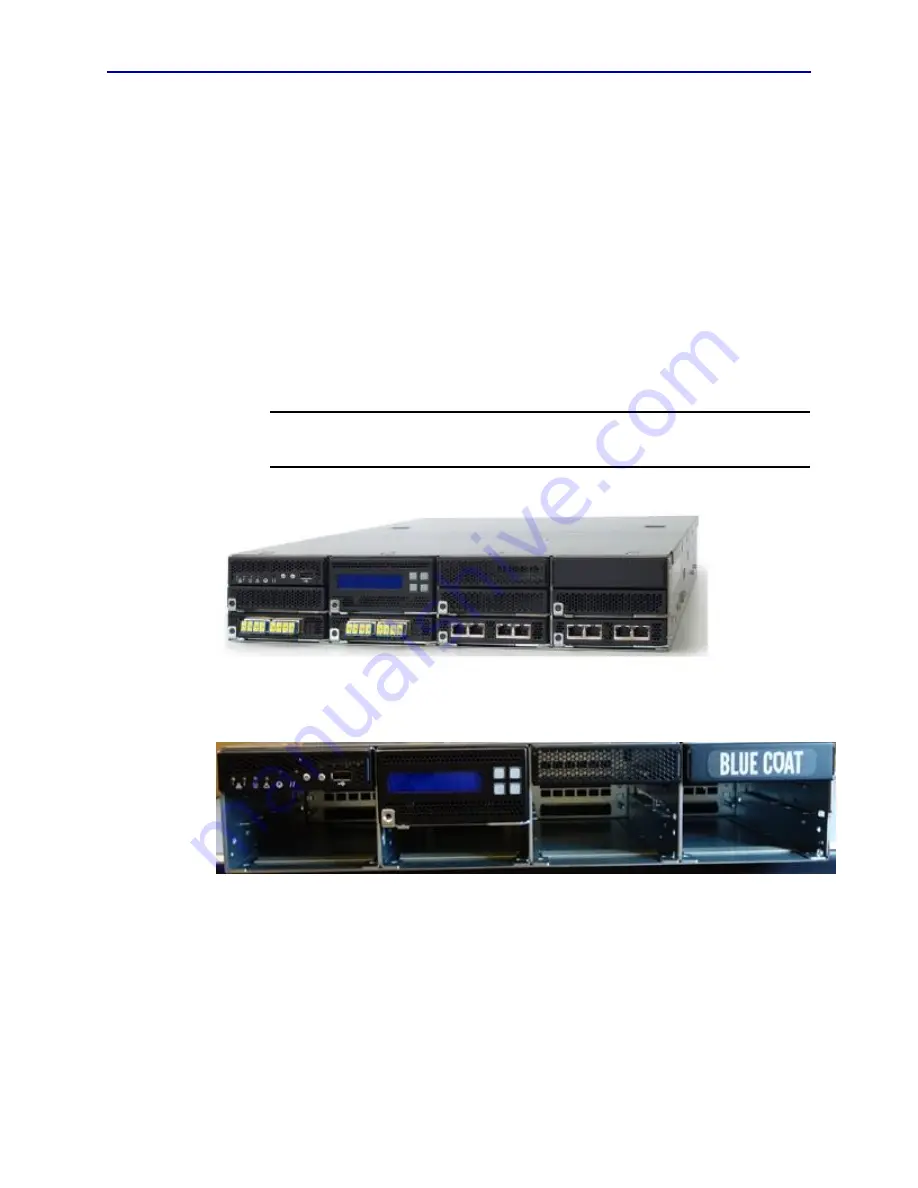
2016 Symantec Corporation This document may be freely reproduced & distributed whole & intact including this copyright
notice.
15
Figure 2-4 shows an SV3800/SV3800B/SV3800B-20 device with four Netmods
installed. In this example, of the Netmods each support 4 x GigE fiber interfaces,
and the other two 4 x GigE copper interfaces. Available Netmod options are listed
below, other Netmod types may become available in the future:
•
4 x GigE copper (4 ports of 10/100/1000Base-T with FTW)
•
4 x GigE fiber (4 ports of 1000Base-SX with FTW)
•
2 x 10Gig fiber (2 ports of 10GBase-SR with FTW)
•
2 x 10Gig fiber (2 ports of 10GBase-LR with FTW)
Fail to wire (FTW) hardware allows pairs of network ports to be physically
connected to each other in the event that the system is powered off or that a
failure is detected. Depending on how the network is connected to the SV3800,
this allows network traffic to continue flowing even when the system is powered
off or in a failure state. When FTW is active, traffic is passed between ports on a
Netmod and never enters the module.
Note: Netmods are NOT hot swappable. The system must be powered
off before removal or installation of Netmods.
Figure 2
–4 SV3800/SV3800B/SV3800B-20, Front View with Netmods Installed
Figure 2-5 shows the SV3800/SV3800B/SV3800B-20 with all Netmods removed.
Figure 2
–5
SV3800/SV3800B/SV3800B-20 Front view with Netmods Removed
From left to right, the front panel includes status LEDs, NMI button, reset
button, ID button, power button, USB connector, LCD display and keypad.
Figure 2-6 shows the front panel display area in detail.





































